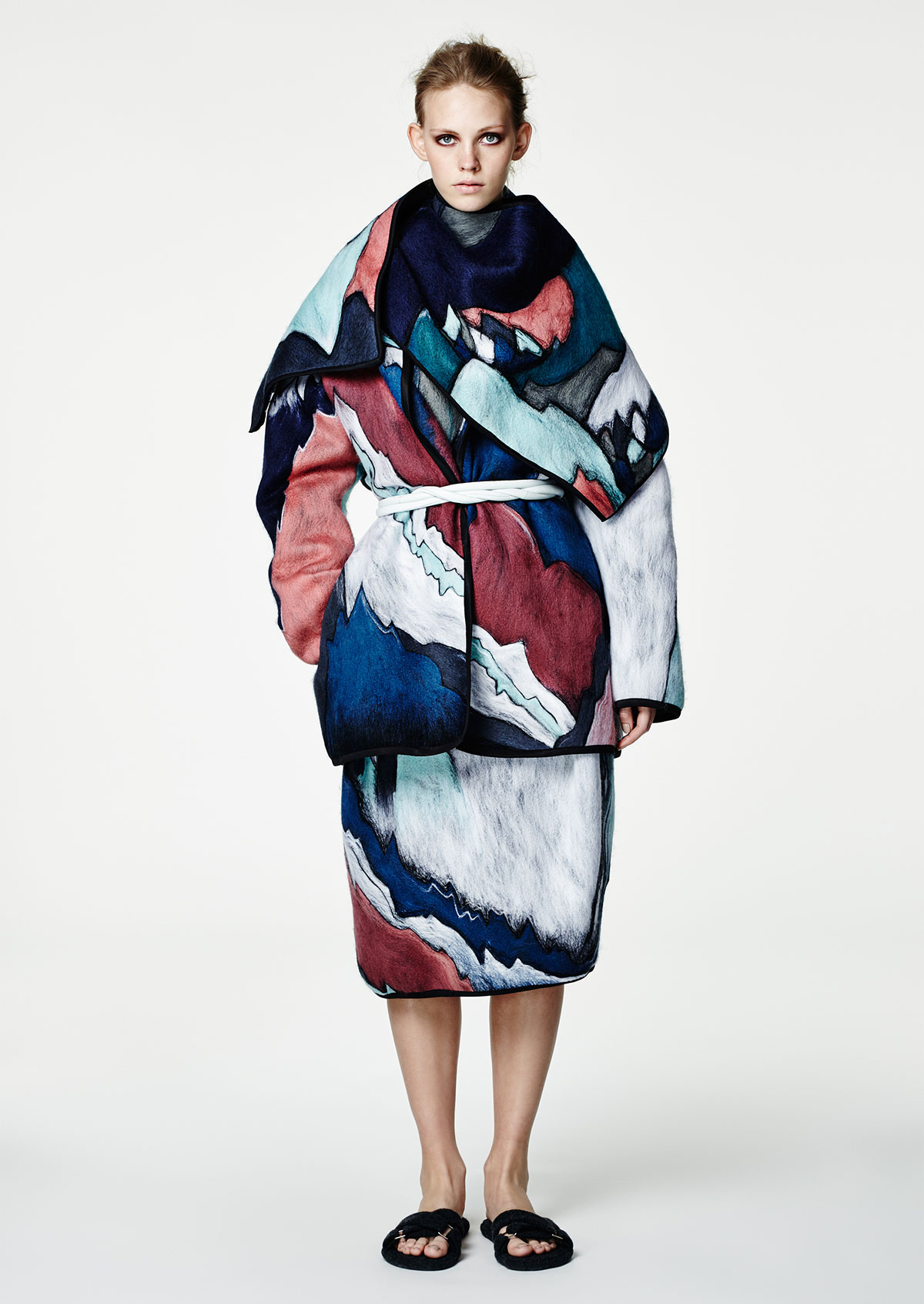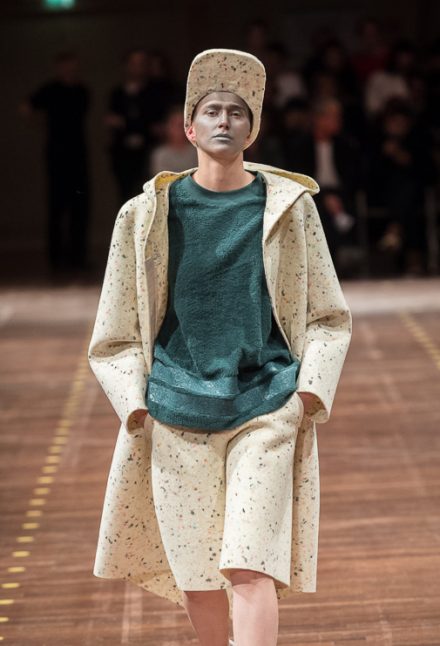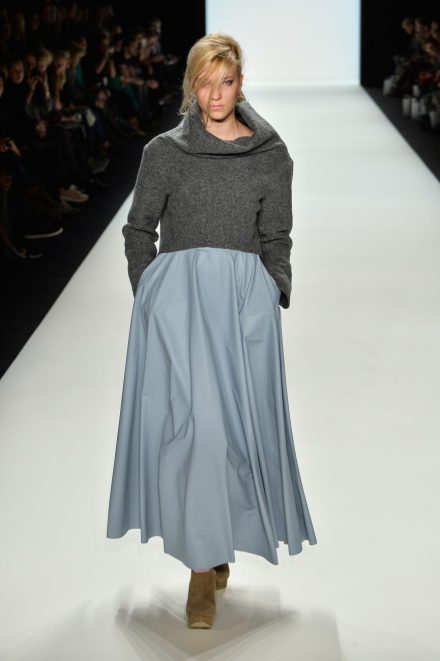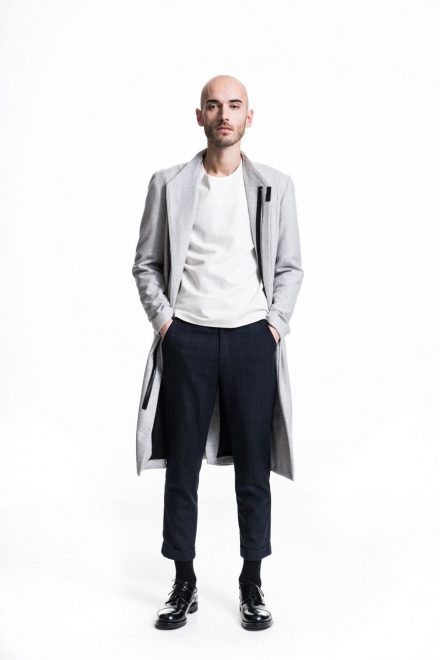Designer Tim Labenda’s career reads like a fairytale. After participating in the TV show “Fashion Hero”German Vogue’s editor-in-chief Christiane Arp quickly took notice of the young talent. Not long after, Tim was invited to showcase his collection, among the cream of the Berlin crop, in the Vogue Salon showroom. Having founded his label in Würzburg in 2013, Tim Labenda—the designer and brand—has quickly risen to fame. Recently, I met up with the likeable designer to talk about his design journey and his current collection.
Why did you pick the University of Pforzheim to study fashion design?
I already did my apprenticeship in tailoring in Metzingen in the south of Germany with Hugo Boss. The University of Pforzheim was just around the corner and well connected to to Munich, Frankfurt and Paris. Although I tried to get a place in Berlin and got into UDK, I already had stomach cramps during the entrance examination, so I didn’t feel that the capital was the right place for me at that time. After being accepted in Munich as well, I decided to go with Pforzheim anyway. Loving the art nouveau architecture I felt very comfortable there and of course the University has an excellent reputation. I already knew from friends who studied there that the classes were held very small with a maximum amount of 10 pupils per semester. Because of that, the student care is very intense and one has a close relationship with the lecturers. In the end, I wasn’t even in Pforzheim for that long; for my third semester I went to Canada to study textile design and my last two semester I spent in Vienna with Ute Ploier. All in al,l I can say it was the right decision for me.




Lookbook shoots from the new AW 15/16 photograhped by Bastian Jung, Model Charlotte Nolting from Modelwerk.


When you’re designing, do you try to find a new pattern/ seam line, or do you want your clients to recognize the origin in a garment?
My womenswear designs are based upon menswear, so you have the classical menswear attributes. That’s why I don’t change so much in the approach with every new collection, but of course the theme changes. You will notice certain quotes in my women’s designs, of course it’s not a one to one interpretation, but for example, the vent and the edging is added and changed in the context.
The new AW 15/16 collection is named “Landscapes”with some pieces made of felt. When manipulating or creating a fabric, how do you begin this process? Do you do small try-outs on your own?
Sadly, I don’t really have the time anymore to do the try-outs by myself. They are developed in the atelier where I talk to the team. I would say, “I imagine it this way, maybe you can work with a certain method or try this or that to get the perfect result.” The manipulation used for this collection reminds me of a chalk drawing, the raw wool is placed on top of the garment, then with a machine it is felted on top. That’s also why every piece is unique; it is not possible to reproduce it in this exact way. So after we managed to produce this, of course we wanted to create something that is possible for us to reproduce. We translated the theme of landscapes into different structured fabrics for other pieces. The knowledge I have in men’s fashion is something I try to apply for womenswear as well. I noticed that normally women’s fashion is fitted very poorly.


You once described your style as “authentic, simple and functional.”Do you think this could change from collection to collection or seasonally?
I would say the focus changes from collection to collection, but it is very important that the things are authentic. This means the garment suits you and your personality. Simple for me means there is simplicity in how easy it is to combine the piece with other things. The functional aspect, is the very functional aspect of a jacket needs pockets, a coat shouldn’t be too long to get in a car or the material shouldn’t crease ect. It’s practical! But then we have those artificial pieces, of course not very functional but it’s more to convey the thought of the collection.
Audrey Hepburn or Marilyn Monroe?
Audrey, she has far more style and class.
After participating in “Fashion Hero”and winning prizes like the European Fashion Award and the Start your Fashion Business Award 2014, what is your advice for fashion students who are about to start their own label and business?
Just leave it! (Laughs) No, you need a huge capacity for endurance! Also it is important to develop a strong personal design style and it is good to listen to one’s gut. I would definitely recommend working for another fashion company at the beginning—some place where you go to get hands on experience and learn about the process from the design sketch to the finished piece. Most students convince with an amazing graduate collection and get a lot of positive feedback, but after that they don’t really know how to get it into production or to whom to turn to. I guess it is also very important to create something new, something the costumer hasn’t seen before, otherwise it is not necessary and it gets boring fast. The garments have to be interesting so that it’s worth its cost. “Fashion Hero”helped me get seed funding for my label. After that, you have to show the industry that “hey, I am still here!”This is also important for buyers; they have to know you have a future in this business.


After presenting for the fourth time at Vogue Salon in Germany, which other markets do you want Tim Labenda to conquer? Is there a plan?
Sadly this was the last time in Vogue Salon, but last season we presented in “Der Berliner Salon”and I guess we will continue there. We also showed the collection in the Paris showroom together with Odeeh and Achtland. At the moment, this is, next to Germany, the best market for us. When we showed in Copenhagen this season, we noticed that Tim Labenda was too pricey for the Scandinavian market. In terms of New York, I guess we are not ready to go there right now. The fashion in New York is more sexy; the skirts are shorter…but maybe when we are bigger, in couple of years, let’s see…
At the beginning of a design career, how important is it to keep true to yourself? When working with buyers, what sort of compromises do you make?
For sure one has to stay true to oneself! Maybe one has to work on the personal recognition value. It is important that the costumer doesn’t have to look at the tag to know that, for example, this is Tim Labenda. However, what I am most grateful for is the feedback I get from buyers and costumers. Sometimes they tell me the fabric of the coat was a bit too heavy and then I can work with this information.
Where is your personal get-away to relax after a stressful season?
Actually, I asked myself the exact same thing yesterday (laughs) because I really want to go on holidays right now. I would love to go to Iceland and escape into nature or maybe even New York, but more so to get new input for work
Who would you like to dress?
I would love to dress American actresses Julianne Moore and Jodie Foster.

SS 15 Collection `POOL´, photographed by Bastian Jung Model Charlotte Nolting from Modelwerk.






